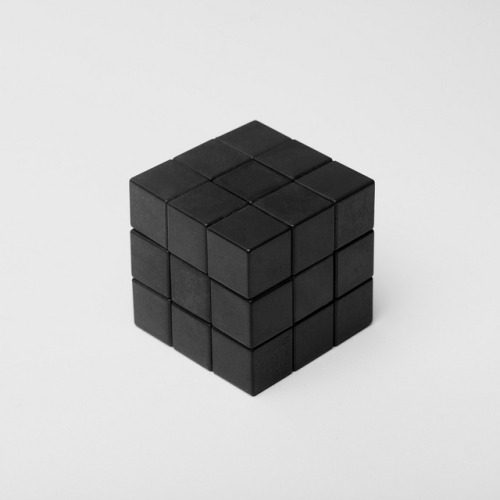Hannahhaifisch - HH

More Posts from Hannahhaifisch and Others


cube

Quantum tunnelling
Tunneling is a quantum mechanical effect. A tunneling current occurs when electrons move through a barrier that they classically shouldn’t be able to move through. In classical terms, if you don’t have enough energy to move “over” a barrier, you won’t. However, in the quantum mechanical world, electrons have wavelike properties. These waves don’t end abruptly at a wall or barrier, but taper off quickly. If the barrier is thin enough, the probability function may extend into the next region, through the barrier! Because of the small probability of an electron being on the other side of the barrier, given enough electrons, some will indeed move through and appear on the other side. When an electron moves through the barrier in this fashion, it is called tunneling.

Quantum mechanics tells us that electrons have both wave and particle-like properties. Tunneling is an effect of the wavelike nature.

The top image shows us that when an electron (the wave) hits a barrier, the wave doesn’t abruptly end, but tapers off very quickly - exponentially. For a thick barrier, the wave doesn’t get past.
The bottom image shows the scenario if the barrier is quite thin (about a nanometer). Part of the wave does get through and therefore some electrons may appear on the other side of the barrier.
Because of the sharp decay of the probability function through the barrier, the number of electrons that will actually tunnel is very dependent upon the thickness of the barrier. The current through the barrier drops off exponentially with the barrier thickness
Source: nanoscience.com | Images: x | x | x

“Ratio of oscillations.” La méthode graphique dans les sciences expérimentales et principalement en physiologie et en médecine. 1885.

A new study publishing this week in the Astrophysical Journal by Gary Prézeau of NASA’s Jet Propulsion Laboratory, Pasadena, California, proposes the existence of long filaments of dark matter, or “hairs.” http://ift.tt/1NdQIKk










Ask Ethan: Does Dark Energy Mean We’re Losing Information About The Universe?
“The universe’s expansion means our visible horizon is retreating; things faraway are vanishing continuously. (Albeit slowly, right now.) This would seem to imply we are losing information about the universe. So why is it the idea of losing information in a black hole’s event horizon is so controversial, if we’re constantly losing information to another horizon?”
As you look to greater and greater distances, you’re looking back in time in the Universe. But thanks to dark energy, what we can see and access today isn’t always going to be accessible. As galaxies grow more distant with the accelerated expansion of the Universe, they eventually recede faster than the speed of light. At present, 97% of the galaxies in the Universe aren’t reachable by us, even at the speed of light. But that isn’t the same as losing information. As a galaxy crosses over the horizon, its information never disappears from the Universe connected to us entirely. Instead, it gets imprinted on the cosmic horizon, the same way that information falling into a black hole gets imprinted on its event horizon. But there’s a fundamental difference between a black hole’s decaying horizon to the cosmic horizon’s eternal persistence, and that makes all the difference.
Come learn why even with dark energy, we don’t lose information about the Universe, but why the black hole information paradox is real!









Ernst Haeckel. Hexacoralla, Ascomycetes, Lichenes, Phaeodaria, Ophiodea, Spumellaria, Basimycetes, Diatomea, Amphoridea. Kunstformen der Natur (Art Forms in Nature). 1899-1904.

#MA17-888
A new geometric design every day








Images of Jupiter taken by the Juno spacecraft during perijove 5 (March 27th 2017) and processed by the public.
Credits; 1: J.P. Hersey 2: Phablo Araujo 3: James Tyrwhitt-Drake 4: Björn Jónsson 5 & 6: Jason Major 7: Uriel 8: Melissa Egan

-
 tempeloskylo reblogged this · 1 week ago
tempeloskylo reblogged this · 1 week ago -
 tempeloskylo liked this · 1 week ago
tempeloskylo liked this · 1 week ago -
 o-meu-mundo-07 liked this · 1 week ago
o-meu-mundo-07 liked this · 1 week ago -
 monkeytelevisedlies reblogged this · 1 week ago
monkeytelevisedlies reblogged this · 1 week ago -
 playst888tion reblogged this · 1 week ago
playst888tion reblogged this · 1 week ago -
 iseverythingokinside reblogged this · 1 week ago
iseverythingokinside reblogged this · 1 week ago -
 on4theride reblogged this · 1 week ago
on4theride reblogged this · 1 week ago -
 jaycb-912 reblogged this · 1 week ago
jaycb-912 reblogged this · 1 week ago -
 suchalovelylady reblogged this · 1 week ago
suchalovelylady reblogged this · 1 week ago -
 timteezy reblogged this · 1 week ago
timteezy reblogged this · 1 week ago -
 timteezy liked this · 1 week ago
timteezy liked this · 1 week ago -
 societalseductions reblogged this · 1 week ago
societalseductions reblogged this · 1 week ago -
 pordetrasdosolhos reblogged this · 1 week ago
pordetrasdosolhos reblogged this · 1 week ago -
 tiva-4 liked this · 1 week ago
tiva-4 liked this · 1 week ago -
 guiimingossi reblogged this · 1 week ago
guiimingossi reblogged this · 1 week ago -
 louvrestory reblogged this · 1 week ago
louvrestory reblogged this · 1 week ago -
 seloobe reblogged this · 1 week ago
seloobe reblogged this · 1 week ago -
 decasolsuds reblogged this · 1 week ago
decasolsuds reblogged this · 1 week ago -
 decasolsuds liked this · 1 week ago
decasolsuds liked this · 1 week ago -
 kaytario reblogged this · 1 week ago
kaytario reblogged this · 1 week ago -
 krinklekuts liked this · 2 weeks ago
krinklekuts liked this · 2 weeks ago -
 saturnpulp reblogged this · 2 weeks ago
saturnpulp reblogged this · 2 weeks ago -
 justbeyourselfsstuff reblogged this · 2 weeks ago
justbeyourselfsstuff reblogged this · 2 weeks ago -
 iamnofilter liked this · 2 weeks ago
iamnofilter liked this · 2 weeks ago -
 saturnpulp liked this · 2 weeks ago
saturnpulp liked this · 2 weeks ago -
 vocedevolta reblogged this · 2 weeks ago
vocedevolta reblogged this · 2 weeks ago -
 wet-hog liked this · 2 weeks ago
wet-hog liked this · 2 weeks ago -
 supernovacocorocha liked this · 2 weeks ago
supernovacocorocha liked this · 2 weeks ago -
 szerelemegytitok liked this · 2 weeks ago
szerelemegytitok liked this · 2 weeks ago -
 the-thespian91 reblogged this · 2 weeks ago
the-thespian91 reblogged this · 2 weeks ago -
 dontfearthevision reblogged this · 2 weeks ago
dontfearthevision reblogged this · 2 weeks ago -
 roua-poemului liked this · 2 weeks ago
roua-poemului liked this · 2 weeks ago -
 cassoszn-v2 reblogged this · 2 weeks ago
cassoszn-v2 reblogged this · 2 weeks ago -
 nnicolodeon liked this · 2 weeks ago
nnicolodeon liked this · 2 weeks ago -
 nyappy-candyholic reblogged this · 2 weeks ago
nyappy-candyholic reblogged this · 2 weeks ago -
 nyappy-candyholic liked this · 2 weeks ago
nyappy-candyholic liked this · 2 weeks ago -
 dritantus reblogged this · 2 weeks ago
dritantus reblogged this · 2 weeks ago -
 echoinglove liked this · 2 weeks ago
echoinglove liked this · 2 weeks ago -
 anotherguyblogger liked this · 2 weeks ago
anotherguyblogger liked this · 2 weeks ago -
 heart-with-love reblogged this · 2 weeks ago
heart-with-love reblogged this · 2 weeks ago -
 vulgarxgrotesq reblogged this · 2 weeks ago
vulgarxgrotesq reblogged this · 2 weeks ago -
 falschehoffnung reblogged this · 2 weeks ago
falschehoffnung reblogged this · 2 weeks ago -
 conelcorazonenlamano reblogged this · 2 weeks ago
conelcorazonenlamano reblogged this · 2 weeks ago -
 danigalaxia reblogged this · 2 weeks ago
danigalaxia reblogged this · 2 weeks ago -
 chocolate-and-cheese liked this · 2 weeks ago
chocolate-and-cheese liked this · 2 weeks ago